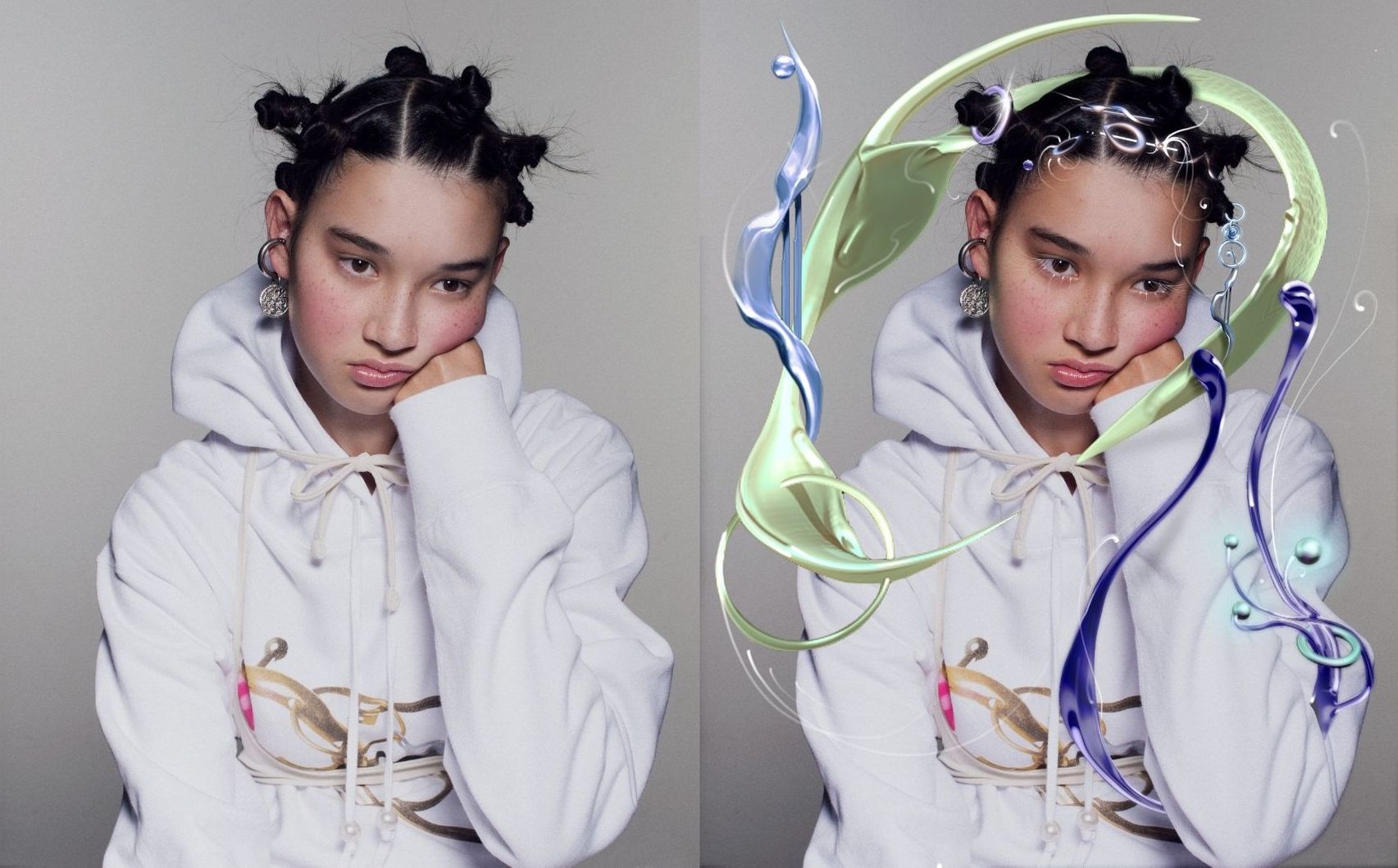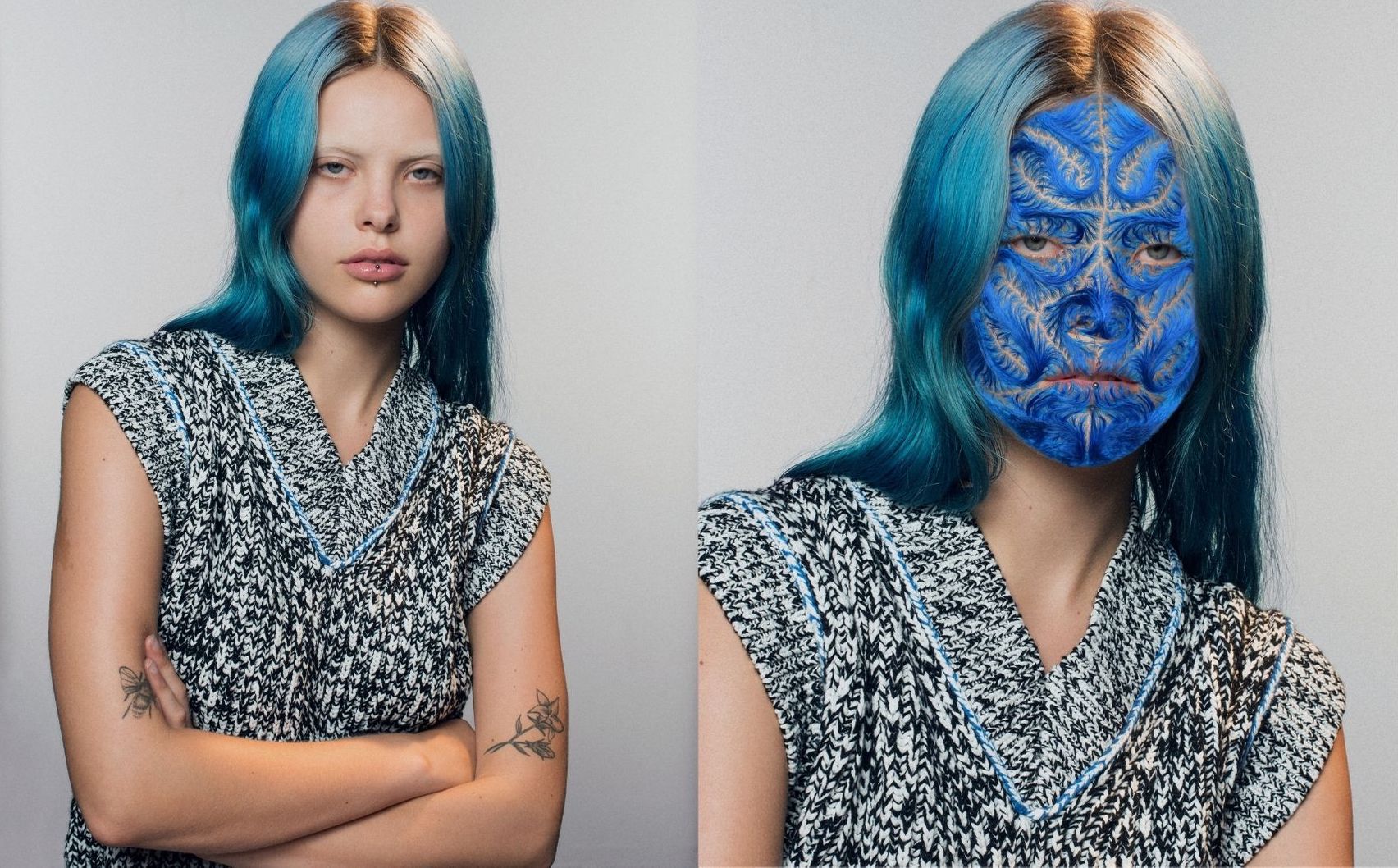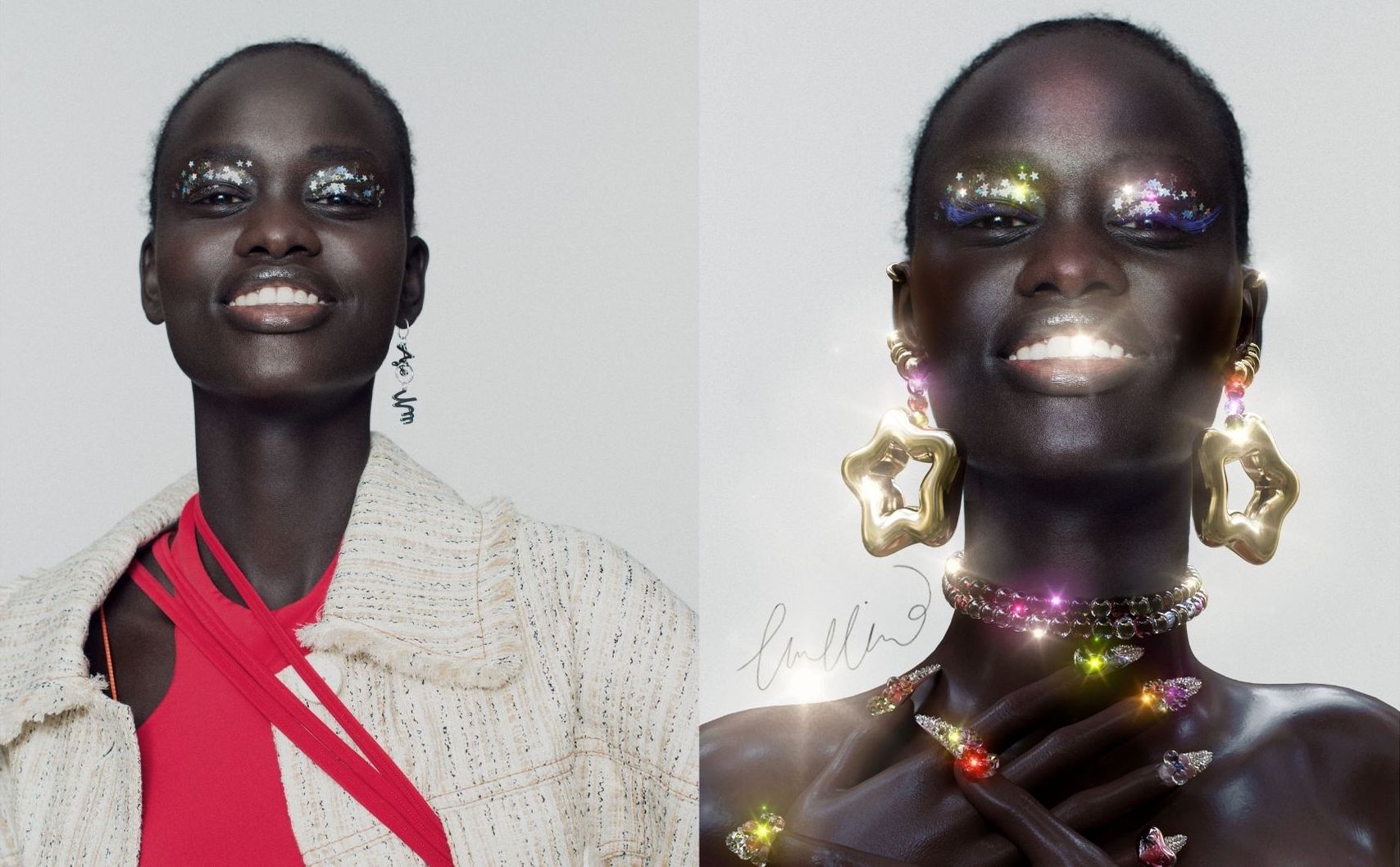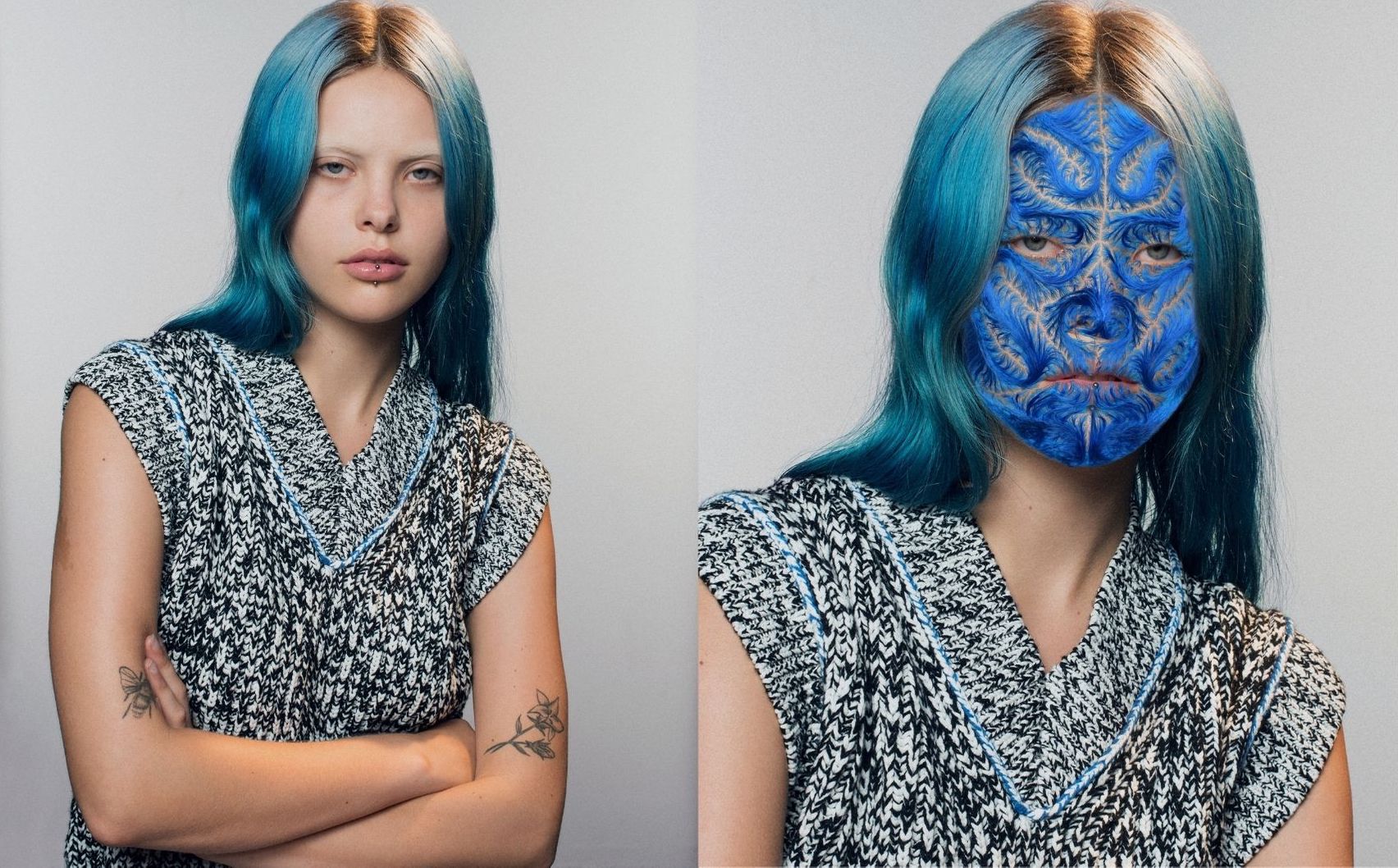Of the rare upsides to emerge from this pandemic, the renewed investment in digital ideas that we’ve seen across industries is easily one. With artists and marketing teams determined to reach audiences stuck at home, we’re increasingly seeing the results of nimble-thinking and new technology coming together via our personal devices. In addition to having front row seats to every major fashion show, brands have been keeping us on our tippy toes by getting extra creative. Recent highlights include Mugler’s mind-bending Spring Summer 2021 videos which we have rewatched at least 20 times, Bottega Veneta’s new magazine Issued by Bottega, Simone Rocha’s innovative augmented reality pop up book and Collina Strada’s stream of trippy animorph mutations. These digital worlds fused photography, film and AR to leave us feeling like we were staring straight into the soul of each label.
Even when we haven’t been online, we’ve been talking about online. This month conversations about NFTs took over every tinder date and office break. Like, what exactly is a non-fungible token? And how the hell should we be pronouncing them—are you team En Eff Tee or team Nifty? We broke it down a little while ago here when it was clear that everyone, and we mean everyone, was jumping onto the NFT bandwagon.
In the same week that Beeple sold a digital artwork for $69 million, Gucci released their first pair of digital sneakers. The shoes aren’t exactly non-fungible as they are available to download infinitely. But they do exist purely in the digital realm and for $13.99 a pop, you can adorn your selfies with this fresh pair of kicks. With more and more people working and socialising from home via webcam, this shift to digital clothing is understandable. Now, however, it also seems like art is best viewed from our downloads folder. Times are changing and we are questioning the way we buy, sell and consume products.
At the forefront of this shift are the digital artists and content creators behind the scenes, working hard to keep pace. Curious about how the industry is changing for those on the inside, we spoke to six up and coming artists, working within the digital universe, about their practice and their predictions for the future of the cyber landscape.

Helena Dong, New York/Melbourne, 25
How do you explain your work to your grandparents? I highly doubt that I’d be able to. My grandmother can’t even fathom the idea of being self-employed, let alone working with commodities that don’t exist in the real world.
What do you think the future of digital looks like?
I would imagine a world where the digital and the real are thoroughly fused. As is already happening, digital will pervade every aspect of life and diffuse through every sensory perception. Despite working with AR, I’m not sure if it’s necessarily positive to reach a point at which we are no longer able to tell apart the real from the virtual. But through this process, I believe that endless possibilities will unfold to alter our experiences of living, of time, of space, of sensation, and to ultimately influence our understanding of reality.
How has COVID influenced your work and the industry as a whole?
The restrictions imposed as a result of COVID accelerated the growth of my work and the industry-wide adoption of alternative media like Augmented Reality. Being at home, and alone, facilitated a rare chance for me to dive into online tutorials every day. Between March and August, I was able to learn 3D modelling and hone my technical skills. Requests for AR development also grew, which pushed me to realise the commercial viability of AR in times of global fluctuations. Now, I actively present this medium to potential collaborators as an innovative yet feasible creative solution.
Do you think digital art is positively influencing the future of our planet? Digital art has the capacity to influence, akin to any creative medium, but the nature of its influence is dependent on the content, the audience and the context. I am thankful to have pivoted to a digital base largely because of the exorbitant levels of manufacturing and consumption within the fashion industry. But the commercial work that I do now, despite its immaterial form, still inevitably serves the stream of consumption in the marketing and sales of material goods. As we enter an era with an intensified focus on elevating digital experiences, I do hope for there to be substantial shifts in collective mindset when it comes to material consumption and wastage. So, although digital art may have a gentler impact on our immediate environment, it isn’t entirely without complications.

Stephanie Shue Yan Lau, NYC/Hong Kong, 24
How would you describe your practice?
I’m not particularly committed to a single medium. You can find me making intricate digital paintings, 3D animations, simple pen drawings or hand-painted garments. Overall, I’d say my practice is creating otherworldly experiences through anything visual.
Talk to us about your thoughts on NFTs.
It’s an exciting idea, to have artists participating in an interdependent community, and profiting off their work instead of giving it away on the web for free. I think it’s safe to say that to a lot of younger creators, freelancing alone simply doesn’t seem like a realistic way to make a living. However, I’m still a bit cautious for many reasons. I’m very curious to see how the environmental impacts of Ethereum blockchain will be addressed in the near future, as well as more transparency as to where these NFTs will be in like, ten years. Also, the overall accessibility of it.
How do you think the industry should change?
This comes up often talking with friends, but representation is far from the end goal! We need meaningful structural change, particularly transparency on how big companies are addressing their traditionally cis white male power hierarchy. How will they ensure vulnerable (trans, queer, bipoc, women) individuals be protected in the industry, and not just used as a face on a campaign? More mentorship and open resources for artists. No more free work for exposure.
What’s next for you?
Working on being a better storyteller, beyond expressing my ideas of beauty, and collaborating more with creatives in other disciplines. I had just finished my first short film called Spirally Seeking, coming out early April. This lengthy project explores both of the above, which hopefully is a good intro to this new chapter of my career.

Kyo, London/Seoul
What do you do exactly?
I am an AR/Graphic Designer who creates visual collections and freelance projects for clients on the side. I share my inspiration, my AR projects and my 3D/Graphic Design work on my Instagram page. I think AR is the best medium to facilitate the connection between users and digital design. AR can be utilised to create absorbing experiences and bring vicarious pleasure through the virtual lens. I focus on filter creation as it’s a gateway branch of AR, making the technology more approachable for users and provides a platform for daily digital interaction.
Who are your favourite artists?
I like artists usually out of the digital art industry as it looks fresh to my eyes. My inspiration comes mainly from the fashion industry, especially Hussein Chalayan and Thierry Mugler.
Tell us how you’ve chosen to modify your i-D editorial image and why?
I put the editorial image in the AR simulator to overlay my filter on the model because my filters (except the commercial ones I’ve made for clients) are my design assets that reflect my personality the best.

Law Degree, Naarm/Melbourne
How did you get into the industry?
Chronically glamping at Uni.
Is there a sustainable aspect to your practice?
Virtual production of, say, a dress obviates much of the environmental cost of doing so in real life, conceding the electricity and hardware cost.
How do you think the industry should change? Despite all this talk about digital democratisation, creative wingspans are still largely plutocratic due to processing power bottlenecks. I think further investment towards optimising tools to operate on iPhones will help to planate the space.
Talk to us about your thoughts on NFTs. I am excited by the new room that has been gouged. But I also think it’s pretty silly that we are just replicating the same intermediating clots from the fiat world. Having no middlemen is supposed to be the point of blockchain.
What’s next for you? I’ve spent some time virtualising physically-native objects. I’m looking to start physicalising virtually-native objects. See my next project Brain Boot here.

Mikka Byarugaba, Sydney, 24
How did you get into the industry?
Faked it till I made it.
What do you think the future of digital looks like?
NFTs. I think future ownership of physical items is going to be obsolete once we’re all tuned into these virtual worlds, and I hate that.
Dream client?
Mugler. I love everything they’ve been doing recently, plus the creative director commented on one of my works so that makes me very happy.
Who are your favourite artists working within the industry?
David Porte Beckfeld, I love his work, industry king.
What’s next for you?
Invest in more cryptocurrencies and list some NFTs with foundation.

Carol Civre, New York, 25
How would you describe your practice to a stranger?
For people who don’t really know what 3D entails, the best way I can describe it is that it’s kind of like creating a digital sculpture or composition and then taking a picture of that sculpture using a computer. In a more general sense, I work with clients to create 3D artworks that range from social and web content to showcase a brand’s products to music videos and cover art as well as visuals for editorials.
How do you think the industry is changing?
I feel that 3D art is slowly being incorporated into the creative industry more and more because the industry seems to be opening up to more experimentation since the digital wave that came along with COVID. I think this is probably because there’s so much content being produced that going for more experimental digital approaches is the best way to get noticed. I feel like everyone in the creative industry is just trying to keep up and stay relevant amongst the impossible influx of visuals that are being made every day. It’s quite draining in some ways, but exciting and a source of opportunity in others.
How do you think the industry should change?
Digital art within the creative industry at large is quite new and still evolving. Being informed about the creative process is necessary because I think a lot of the time this is what creates inequity in the way digital artists are treated and perceived. 3D can be hard work much like any other creative job and should be treated and compensated as such, even when working with small or independent artists.
Dream client?
I think it would be cool to work with musicians more, on either music videos or cover work. I’ve been loving every visual Lil Nas X has been putting out lately.
Tell us how you’ve chosen to modify your i-D editorial image and why?
I did some good old digital styling. I kept the face of the model and added a body that matched and a variety of accessories that I created. I played with light and texture. I had fun with it!
Credits
Photography Edward Mulvihill
Photography assist Dane Moffat
Stylist Sarah Pritchard
Stylist Assist Tor Wills
HMU Xeneb Allen
Talent Hannah, Coco, Penny, Dalia @ Priscillas + Koujayn & Anjali @ Kult
